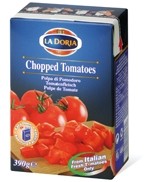Liquid cartons shape up as part of the mix - for some

Aseptic cartons for processed foods have, over the past year, created a niche for themselves in Europe, but only as a relatively minor part of the packaging mix, and for only a handful of companies.
Last winter's Daily Mail-inspired rumours about the 'end of the tin can' turned out - unsurprisingly - to have been greatly exaggerated. The Tetra Recart system, for instance, will have seen 15 installations worldwide by the end of 2008, according to Tetra Pak, eight of those in Europe, none in the UK.
Belgian vegetable processor La Corbeille, which features in Tetra Pak case studies, says that its 6,000 cartons per hour (c/h) R2 Recart machine accounts for less than 10% of output, with the remainder accounted for by traditional cans and glass. The company also packs some product in plastics which, like Recart, can be processed in a retort.
"We will not get to the situation where there will be no cans or glass jars," says export manager Luc Bruneel. "Consumers will have a number of packaging formats to choose from. But then, consumers can be quite conservative."
La Corbeille is looking at upping Recart capacity for chunky sauces, soups and other vegetable products, which may mean investment in a second or even third R2 machine for flexibility, says Bruneel. Tetra Pak also supplies the R1 machine, offering outputs up to 24,000c/h.
Another European producer to have launched into the retort carton market is La Doria, Italy. Last summer, the company began using a Combisafe system from SIG Combibloc for some of its chopped tomatoes and other vegetables, and this summer began to pack soups in the same format. Like La Corbeille, La Doria specialises in retailer own-label products.
The Italian company says it expects a return on investment only in the medium term. But it also says that the format offers a 15% space saving over cans on the pallet, and up to 50% space savings on shelf.
In fact, it is doubtful whether any cost savings from space efficiency are currently being passed up or down the chain, given that retail prices remain higher than for cans.
Steve Thomas, marketing manager at Crown Food Can Europe, believes that the can remains the most cost-effective option for processed foods. He adds: "There's room for everyone. The carton is just one alternative to all sorts of materials, including plastics, glass and cans."
Much has been made of the liquid carton's environmental credentials, including Forestry Stewardship Certification status for the board. But questions remain over other aspects, notably the collection and recycling of used cartons in the UK.
Easy opening, increasingly offered by cans, is another issue.












